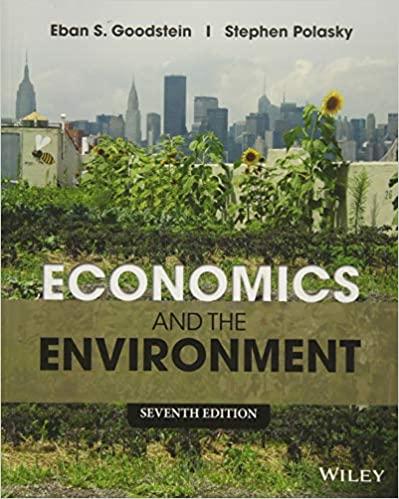To implement portions of the 1990 Clean Air Act, the EPA adopted a distinctly corporatist approachnegotiating the
Question:
To implement portions of the 1990 Clean Air Act, the EPA adopted a distinctly corporatist approach—negotiating the regulatory details with representatives from industry, the states, and big environmental groups.13 Agreement was reached by representatives of these generally hostile groups on regulations designed to encourage the use of the so-called clean fuels. Industry benefited by having gasoline content standards set on an average basis rather than for every gallon of fuel. This provision reduced costs substantially. Environmentalists won a favorable resolution of an ambiguity that Congress had left in the law about the maximum allowable vapor pressure for fuels.
1. As the price for participation, all of the parties to the agreement pledged not to sue the EPA over its final clean-fuel regulations. Assume the agreement to sue is not legally binding. What incentives do the parties at the table have to abide by their promise not to sue?
2. The New York Times reports that all parties involved were happy with the clean-fuels decision, calling it a win-win solution. Relabel the prisoner’s dilemma diagram in Section 12.5, using the strategies “negotiate” and “negotiate and sue” and the payoffs “average gas content” or “per gallon gas content”
(for industry) and “strict vapor emissions” or “lax vapor emissions” (for environmentalists).
Does the diagram illustrate, in principle, that all parties can be made better off by making an enforceable pledge not to sue?
3. Despite the apparent success of the clean-fuels negotiations, the EPA has made little headway in encouraging other corporatist endeavors. At the time of this particular deal, the Consensus and Dispute Resolution Staff at the agency had succeeded in getting agreements in only 12 out of 600 cases. Why might corporatist strategies be hard to implement in the United States?
4. In fact, not everyone was happy with the agreement. One critic of the corporatist approach, Stephen Viederman, put it this way: “ ‘Where you stand,’ according to Miles Law, ‘depends on where you sit.’ Who comes to the table is undeniably central to what is decided at the table. . . . The good news [about the clean-fuels decision] was a broader participation in rule-making, with the views of business and industry balanced by other groups” (“Who Comes to the Table” 1991). Based on the criticisms of corporatism discussed in Section 12.4, what do you think Viederman’s bad news might be?
Step by Step Answer:

Economics And The Environment
ISBN: 9781118539729
7th Edition
Authors: Eban S. Goodstein, Stephen Polasky





